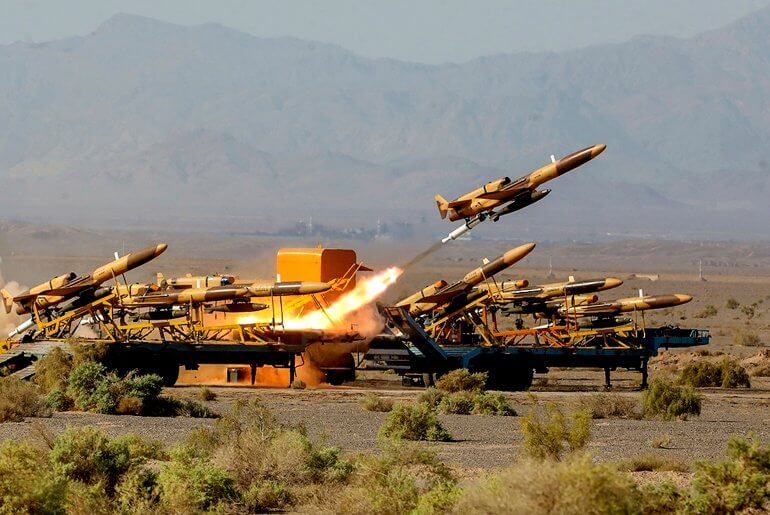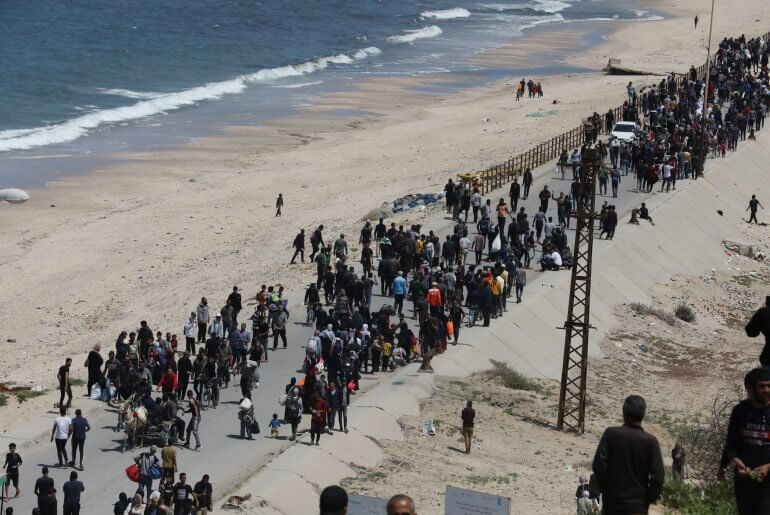Shu’fat refugee camp is under siege. The Israeli army unleashes its fury in a fervent manhunt for the fighter responsible for killing a soldier at the Shu’fat military checkpoint. In Nablus, an armed resistance group going by the name of Areen al-Usud (“the Lion’s Den”) puts out a call for a mass strike across Palestine. What’s more surprising is that several cities heed the call, despite the fact that it did not originate from any official political party, yet putting a halt to normal life in many cities all the same.
None of this would have been fathomable less than a year ago. In the past few days, Areen al-Usud has declared responsibility for six different shooting operations against Israeli military targets. In Jenin refugee camp, another armed group, the Jenin Brigades, continues to make a stand against the Israeli army during its incursions into the camp. Just this morning, as the Shu’fat siege entered another day, the army launched a parallel invasion of Jenin, killing one and injuring six others in the months-long effort to stamp out the burgeoning resistance movement there.
The exchange of gunfire with the army has become commonplace across Jenin and Nablus, and every day seems to bring with it another martyr, another round of arrests, another siege in another town. Everyone is saying the same thing — it’s like the early 2000s all over again, when Israel launched a full-scale military invasion of the West Bank to destroy the main havens of the Palestinian resistance.
It’s too early to tell what moment we’re in, though — whether it’s the historic turning point that will bring us back from the past decade of subservience, or the last gasp of protest before something even worse — but what’s certain is that we’re closer than we’ve ever been to returning to a state of refusal, if not full-fledged resistance, to the settler-colonial reality some would have us ignore.
But the comparisons with the Second Intifada are so far premature. Although the mere existence of several armed groups that have established secure strongholds in the West Bank is itself unprecedented, there’s an important difference. A few months into the Second Intifada, all the major political factions formally went to war against the colonial state. Even the PA security apparatus participated in the fighting, as every Palestinian population center became a haven for Palestinian guerilla groups, becoming massive paramilitary organizations geared towards defensive and offensive armed confrontation — in other words, there was a clear decision taken at the political level to resist by any means necessary, in step with the popular momentum and rage that was first set off when Ariel Sharon stormed the Al-Aqsa compound with his supporters in September 2000.
Today, the political parties that participated in the Intifada are hollow shells of what they were twenty years ago. The PA at its best sits idly by as it is scolded by its overlords, and at its worst actively participates in the effort to suppress the resistance, arresting fighters and putting down protests.
The popular mood, however, seems far more prepared for a confrontation, if the mass strikes, the protests, and the rise of new popular symbols are any indication. With every new martyr that falls in battle, it seems that others are stepping in to take their place. But none of those resistance fighters seem to be taking orders from someone above them, or indeed to have political affiliations of any kind. At the same time, those that have fallen have gained legendary status in the popular imagination, becoming examples of heroism in an age without heroes. At a time when political parties have become associated with corruption and defeatism, it is no wonder that the Palestinian street has far outpaced the official political class.

Even Hamas and the Palestinian Islamic Jihad — their main leadership isolated in the Gaza Strip — have only taken halfhearted measures of support. The PIJ has largely operated in the West Bank indirectly, and the open secret is that it has had a hand in funding and arming the groups that over the months have coalesced into the Jenin Brigade and Areen al-Usud. This is hardly nothing, but perhaps it is telling that even one of the most militant resistance groups has chosen to act by proxy.
But mere proxies those groups certainly are not. With no clear political alignments, both the Jenin Brigades and Areen al-Usud seem to have transcended party affiliation, moving beyond narrow factional loyalties and cohering around one common goal — to revive the line of resistance.
Much has been said about how Ibrahim al-Nabulsi and his comrades were nominally affiliated with the Al-Aqsa Martyr’s Brigade (Fatah’s armed wing) while receiving PIJ funding, but regardless of whether that somewhat reductive characterization is entirely accurate, it’s clear that their eventual emergence as “Areen al-Usud” — and not as the resurrected armed wing of Fatah or the proxy of the PIJ — makes them an entirely novel formation.
The genesis of the Jenin Brigade is the same story, although with somewhat deeper roots — the Jenin area, and the Jenin refugee camp in particular, was a fierce stronghold for the armed struggle in the Second Intifada, and even caused a partial settlement withdrawal from the area surrounding Jenin due to the resistance activity there. And ever since the start of this year, Jenin has made a full return as a site of resistance, while Jenin refugee camp has become a semi-autonomous zone, in the sense that the Israeli army cannot casually stroll into it without being met with gunfire.

Those of us who rush to declare this moment the harbinger of the coming Intifada do so with some hesitation, perhaps because previous periods of upheaval, from 2015 to 2021, all eventually fizzled out. But it also doesn’t mean that there hasn’t been a cumulative effect after each uprising, and today feels palpably different. The fate of this moment might end up being decided by whether Palestinian society rallies around the armed resistance groups.
Last Tuesday, Areen al-Usud put out a statement addressing the wider community in Nablus: “we ask of you, the citizenry, to defend us and have our backs, and to honor the call of the [Lion’s] Den freely and without compulsion.”
The call of these nascent resistance groups is clear — no armed resistance effort can survive without a popular base to uplift and defend it. Likewise, if these groups remain largely confined to Nablus and Jenin, Israel’s task of annihilating this wave of resistance will be all the easier.
Areen al-Usud’s statement echoed this sentiment, as well as the injunction for other Palestinian forces to join the battle:
“We ask our people in the Mountain of Fire [a common name for Nablus] to be vigilant, and we ask the fighters in all the Palestinian factions to be on alert. The battle approaches.”
Faris Giacaman
Faris Giacaman is the Managing Editor for Mondoweiss.




This essay by Jonathan Cook seems uber-relevant to the current moment:
https://www.middleeasteye.net/opinion/westerners-live-denial-convinced-theyre-good-guys
Stark contradictions in West’s treatment of the Ukraine war and the occupation and siege of Palestine should serve as a wake-up call…The blast on the Kerch Bridge was welcomed with barely concealed excitement from western journalists, politicians and analysts, while Moscow’s strikes on Kyiv were uniformly denounced as Russian brutality and state terrorism. That is not the way things work when Israel and Palestinian factions engage in their own rounds of fighting.
Had the Palestinians openly celebrated blowing up a bridge in East Jerusalem, a territory illegally annexed by Israel in the 1960s, and killed Israeli civilians as collateral damage in the process, who can really imagine western media reports being similarly supportive? …In reality, Palestinian resistance nowadays is far more modest – and yet still receives western censure. Palestinians need only to fire a home-made rocket, or launch an “incendiary balloon”, usually ineffectually out of their cage in Gaza – where they have been besieged for years by their Israeli persecutors – to incur the wrath of Israel and the western powers that claim to constitute the “international community”.
Big Israel.
https://www.jonathan-cook.net/2022-04-12/zelensky-ukraine-big-israel/